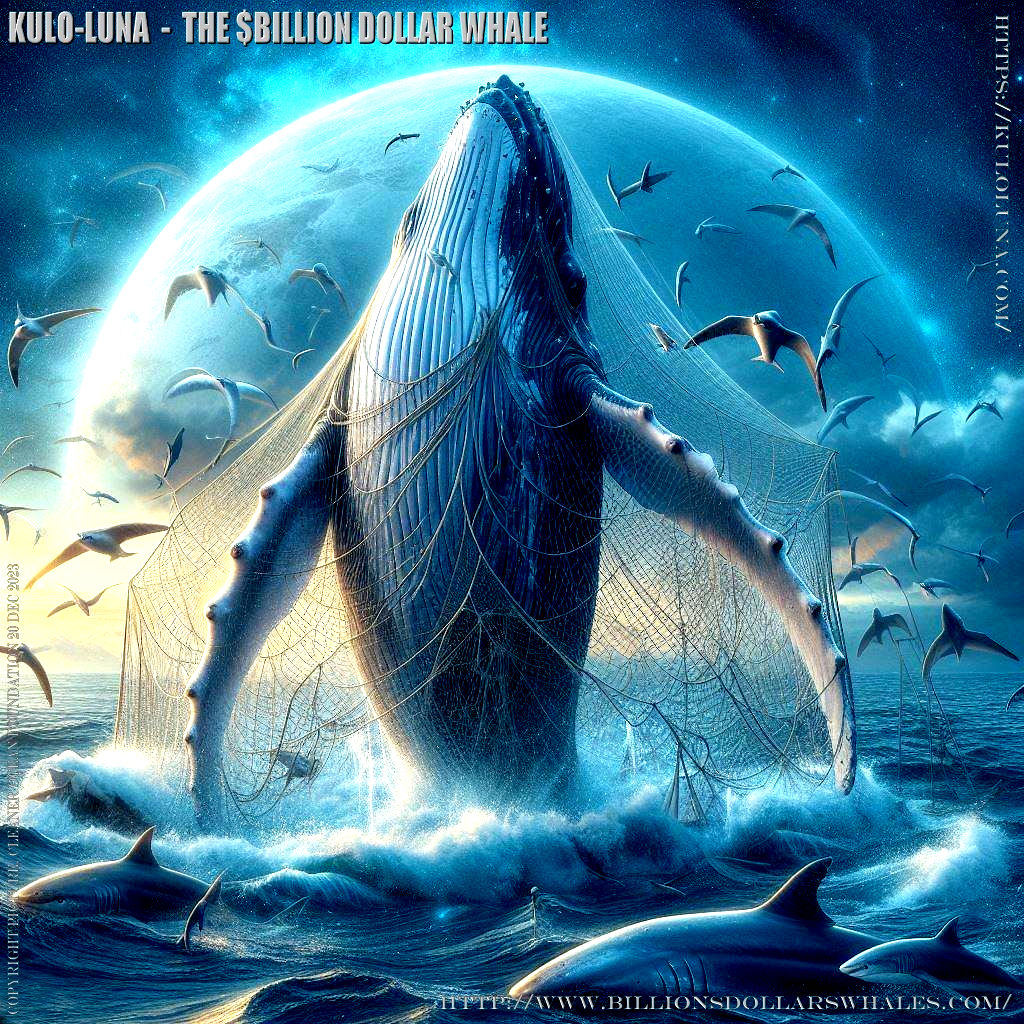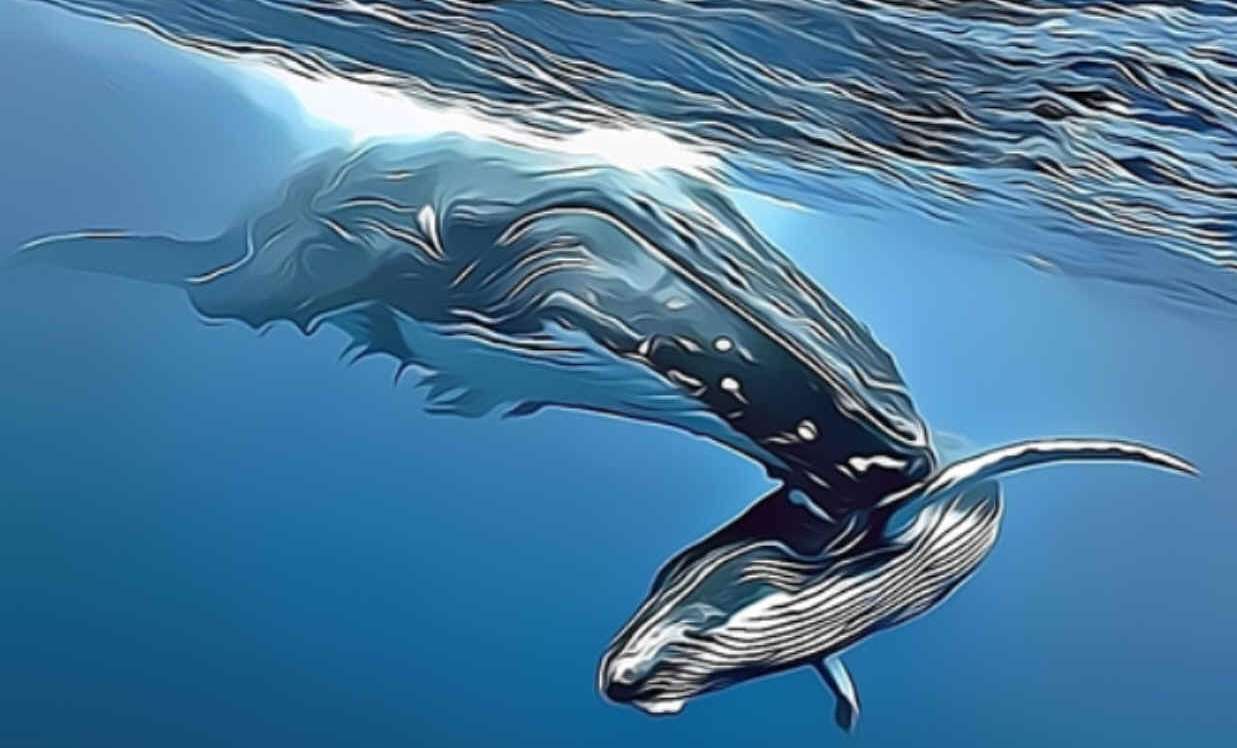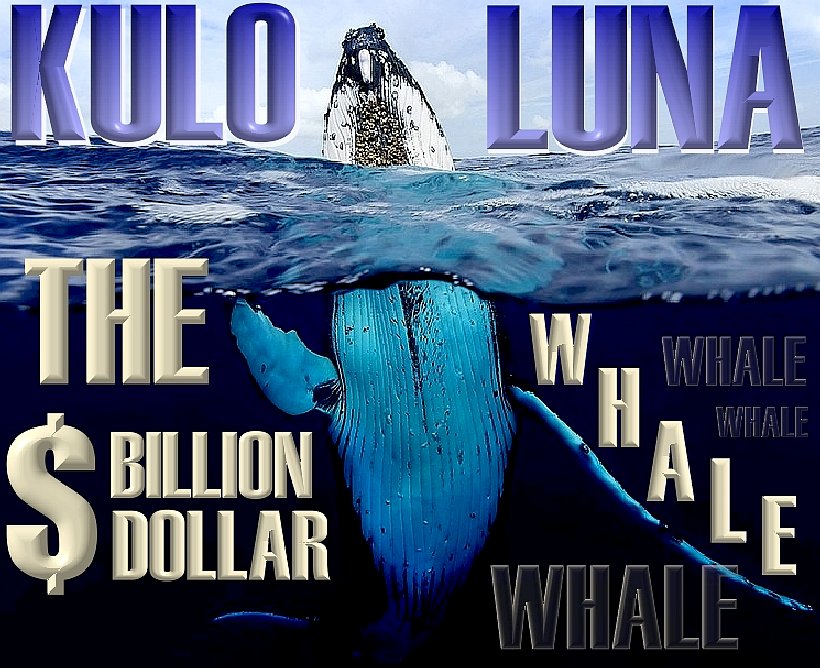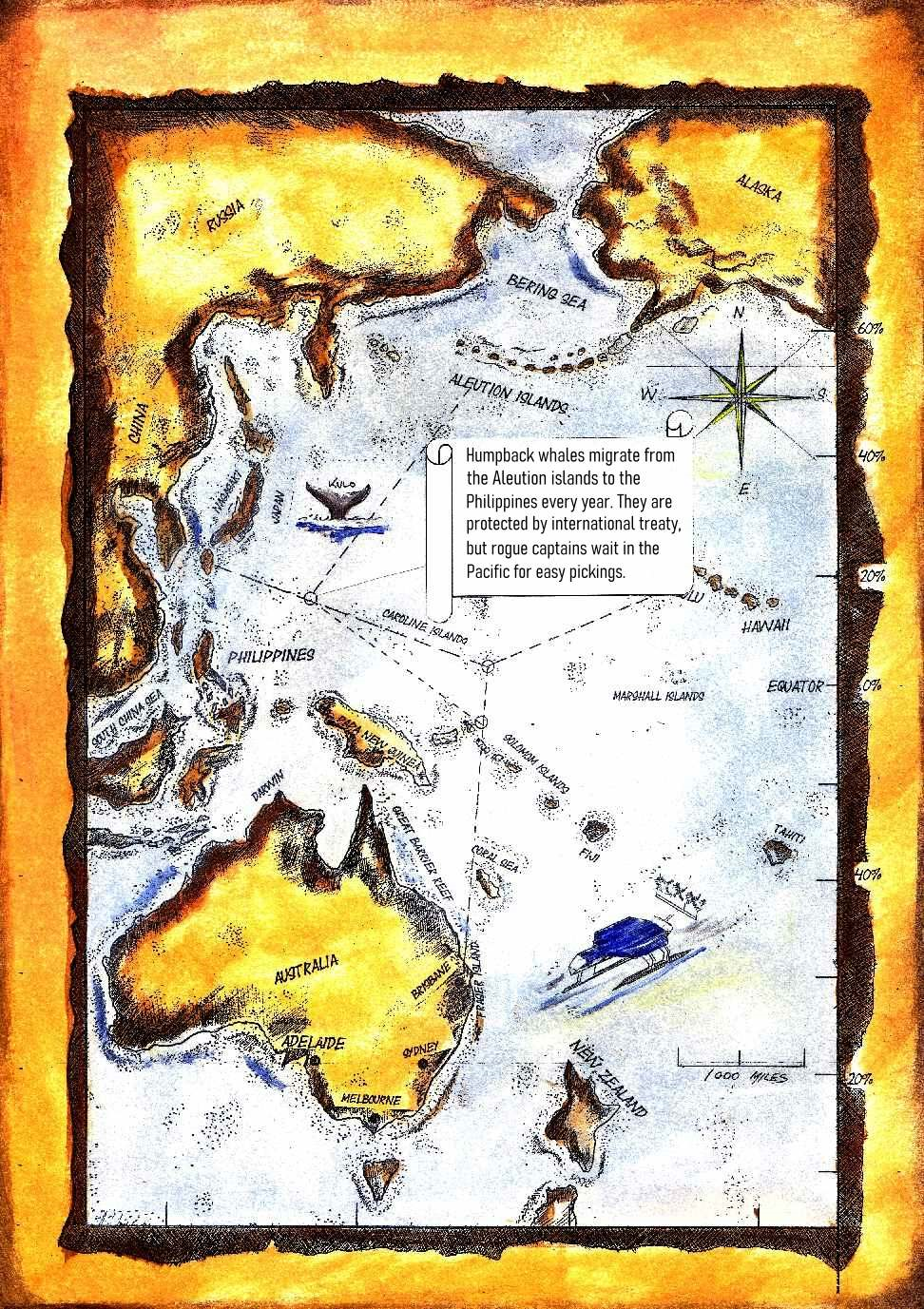|
KULO LUNA
Please use our A-Z INDEX to navigate this site, or swim HOME
|
||||||||||||||||||||||||||||||||||||||||||||||||||||||||||||||||||||||||||||||||||||||
Kulo-Luna is ensnared in discarded fishing nets, and is doomed to drown, then be eaten by hungry sharks, who are just waiting for the inevitable slow death of marine mammals caught by ghost gear. Fortunately, John Storm hears of the unfolding tragedy, because the giant humpback whale had previously sunk a pirate whaling ship, the Suzy Wong.
Kulo Luna is a very large female humpback whale and the star character in this ocean conservation adventure.
Being at the top of the food chain, whales are more at risk from ocean pollution than humans. Because humans can choose not to eat seafood, and not to swim in polluted seawater.
Humans have been dumping their waste in the oceans for hundreds of years with little thought for the consequences, but only in the last 50 years has plastic become such a hidden menace and danger to almost all marine life.
Kulo Luna and her small friend Kana, play in the Arctic water off the Aleutian Islands, before their fateful migratory swim.
THE DANGERS OF SINGLE USE PLASTIC & CHEMICAL DISCHARGES
Plastic bags and sheeting can fill a whale's stomach, twist into their intestines and completely block their digestive system.
Toxins attached to plastics, bio-accumulate as smaller animals ingest the particles, and pass a concentrated dose of poison up the food chain.
The digestive systems of whales consists of an esophagus, a compartmentalized stomach (similar to that of ruminants like cows) and an intestine. Prey that is ingested by the thousands in baleen whales, are not chewed but rather swallowed whole. They then pass into the esophagus, where they are pushed toward the expandable stomach.
The esophagus of the blue whale, even if it takes in 2-3 tonnes of krill a day, measures just 15 to 25 cm long when fully extended. The food then reaches the first stomach compartment, the rumen. Pre-digested food is stored there. This compartment breaks down the food by muscular movements called peristalsis.
The ground mix is then directed toward the main stomach (or cardiac stomach), where glands produce acid and enzymes used to digest the food (hydrochloric acid, pepsin). The journey continues through a narrow channel before finally reaching the last stomach compartment, the pylorus. It is the combined actions of these different compartments that allow whales to digest the chitin in the exoskeletons of
krill and prey swallowed whole.
As cetaceans have no gall bladder, it is the liver that provides the bile needed for digestion. Cetaceans have the largest livers of all mammals.
The adventures of John Storm and the Elizabeth Swann. John Storm is an ocean adventurer and conservationist. The Elizabeth Swann is a fast solar powered boat. During a race around the world, news of the sinking of a pirate whaling ship reaches John Storm and his mate Dan Hawk. They decide to abandon the race and try and save the whale.
....
....
Please use our A-Z INDEX to navigate this site
|
||||||||||||||||||||||||||||||||||||||||||||||||||||||||||||||||||||||||||||||||||||||
|
This website is Copyright © 2025 Cleaner Ocean Foundation Ltd and Jameson Hunter Ltd
|



